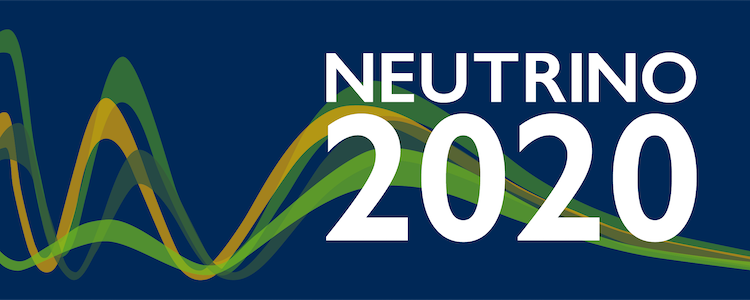A record 2,700-plus registrants from around the world will gather online from June 22 to July 2 for Neutrino 2020, the biggest conference in neutrino physics. This year the event is hosted by the Department of Energy’s Fermilab and the University of Minnesota. The meeting brings together experts in the field to share the latest findings and future plans in neutrino research.
Neutrinos are exciting and enigmatic particles that may hold clues to some of the big mysteries in physics. They’ve been a hot topic in both science and the news recently. Signals of unexpectedly energetic neutrinos arrived in Antarctic weather balloons. Data have shown hints that neutrinos and their antimatter twins may not act as expected, a potential tie to why the universe is so full of matter. Enormous international collaborations are building gigantic experiments to better understand the little particle.
“Neutrinos are such an interesting avenue of research to explore because they hold so many secrets,” said Steve Brice, a scientist at Fermilab and one of the conference organizers. “We know there is physics beyond the Standard Model, our current understanding of the universe. Pursuing neutrinos is one of our best hopes of learning more of these fundamental truths about our world.”
The headline talk by University of Wisconsin-Madison physicist Francis Halzen will look to the future role neutrinos can play in multi-messenger astronomy, the coordinated collection of different kinds of signals (such as those from gravitational waves) from beyond our solar system. Combined, these messengers provide a new window into our cosmos. David Nygren of the University of Texas Arlington will give the second headline talk, showcasing the progress in R&D for neutrino detectors.
Each day will feature updates and plans relating to one or two topics within neutrino physics. These include directly measuring the still-unknown mass of the neutrino, neutrino interactions, solar neutrinos, neutrino theory, neutrino cosmology and astronomy, reactor neutrinos, neutrinoless double beta decay, sterile neutrinos, and neutrino mixing. One day will be dedicated to long-distance neutrino experiments, including the international Deep Underground Neutrino Experiment hosted by Fermilab and the Hyper-Kamiokande experiment hosted by Japan.
The conference will be held entirely online this year for the first time, with fewer talks per day but the time period extended to two weeks to accommodate international participants in multiple time zones. Neutrino 2020 will start at 7 a.m. Central time on June 22 and run through July 2. The change has allowed triple the typical number of participants to sign up for the conference and resulted in an increased number of abstracts submitted for the poster session.
“We’re really trying to delocalize and adapt for a worldwide audience,” Brice said. “There are people engaged in this conference that wouldn’t have been able to come to an in-person event.”
Talks are scheduled with consideration for the presenter’s local time, and speakers are encouraged to make their slides available so that those in other time zones can ask questions in advance and have them answered in the live presentation.
The full schedule of events and additional details are available on the conference website.
Fermilab neutrino research is supported by the DOE Office of Science.
Fermilab is supported by the Office of Science of the U.S. Department of Energy. The Office of Science is the single largest supporter of basic research in the physical sciences in the United States and is working to address some of the most pressing challenges of our time. For more information, visit science.energy.gov.
Original post https://alertarticles.info
